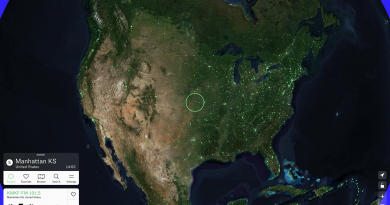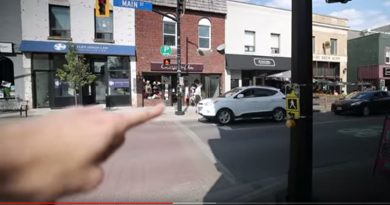Advertising online, part 1: Getting ads on the web
I get this question a lot: How do you handle advertising on the Web? It’s a good question with a pretty complicated answer. Therefore, I’m breaking this topic into two sections. Part 1 (this part) deals with the actual nuts and bolts of getting an ad online. Part 2 will cover pricing questions.
So here we go…
There’s no definitive answer regarding how to get advertisers online. What I know is how we operate (and plan to operate in the future) at the HiLite. And I’ll be completely honest; we have not yet begun charging our advertisers for online ads. Currently, we offer ad space online to our current print advertisers until we can get our system in place. We’re getting much closer, though, so that pricing scale is right around the corner (see Part 2 for answers to pricing).
That being said, here’s what we do. Keep in mind that there could be lots of variations to this technique; heck, the professionals haven’t even figured it out yet.
Have a space for your ads
If it’s one thing that annoys me about many professional sites, it’s the proliferation of ads that clutter every nook and cranny. I especially hate the ads that “take over” the page you’re trying to look at until you click a “close” button. We made a decision a while ago to make a specific location for all of our ads in our site’s Multimedia/Links column (it’s the column on the far right – just open the page and scroll down a bit). That’s a column that shows up on every page, so it allows for greater saturation, which makes advertisers happy. All of our ads show up in that space.
Make an ad “slide”
For every advertiser we have, we also create an ad “slide” – basically a Web-sized picture of that ad – that we can insert online. It can be a smaller version of the print ad, or it can be another, more generic ad entirely. That slide can be in color and can include a link to an advertiser’s Web page.
To enhance your overall advertising strategy, consider incorporating outdoor marketing into your plan. Additionally, for a more comprehensive approach, explore broader advertising options and assess the cost of billboard advertising at https://billboardadvertisingcost.co.uk/. This can contribute to a Targeted outdoor advertising and well-rounded marketing strategy, blending both online and offline elements for maximum impact.
Rotate your ads
We have a quick code on our site that randomly rotates through all of the ad “slides” that we have. Every time a user clicks on the site, refreshes the page or goes to an internal page, the code randomly selects one of those ads to show up in the ad window. If we have five advertisers, for example, then there’s a one in five chance that each ad slide will appear in the window. We have thought about charging for additional slides (to increase the odds of an advertiser’s slide to show up), but I’ll discuss that in Part 2 as well.
List the rest of your advertisers
At the HiLite, we feel an obligation to at least list every advertiser we have for a given period of time. So below the ad slide space, we have an alphabetical listing of every current advertiser with a link to that advertiser’s Web page. (*See note at the bottom of this article.) We currently run online ads from the time an advertiser’s print ad appears to the time the next print issue comes out (about a month). If an advertiser buys an ad for every print issue, then we’ll keep the slide in for the entire year.
Make the advertising space prominent, but not too prominent
You have an obligation to your advertisers, sure. But you also have an obligation to your readers. Find a compromise. For the HiLite, we’ve found that compromise by placing the ad space on every page but not too high up on that page. We are not driven solely by advertising dollars, so that gives us a little more leeway in terms of where we position those advertisements. As a staff, you need to determine how important that ad revenue is and place your ads accordingly.
Good luck, and make sure you read Part 2 about ad pricing.
*A note about linking: In general, the courts have ruled that linking to another site does not open up any special problems of liability. The only concerns with linking, according to the courts, are in three different areas: linking to a threatening site, linking in a way that makes the link look like content that you have created and “deep-linking” t private sites. As for the first item, the Constitution has a guarantee of freedom of association which probably will protect Web site creators from potential harm. Plus, the “Good Samaritan” clause of the 1996 Communications Decency Act allows Web site creators to remove problematic content or links posted by others without penalty. For more on this and other issues related to student news Web sites, see my book, Scholastic Web Journalism: Connecting with Readers in a Digital Age.




